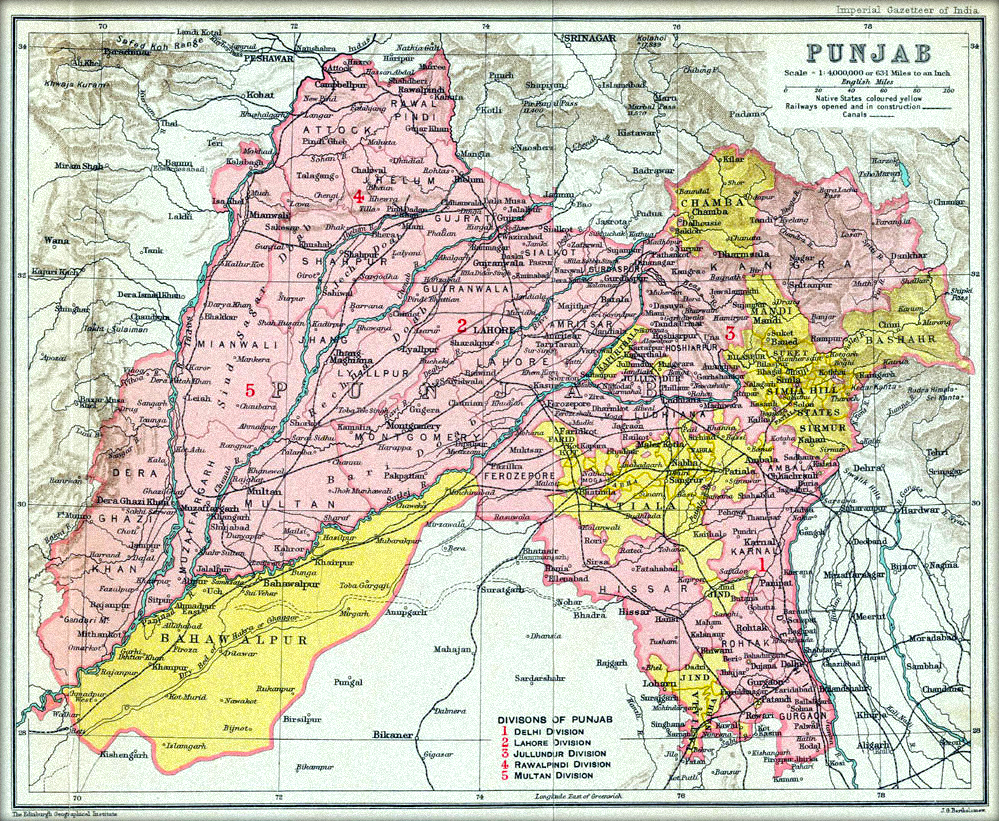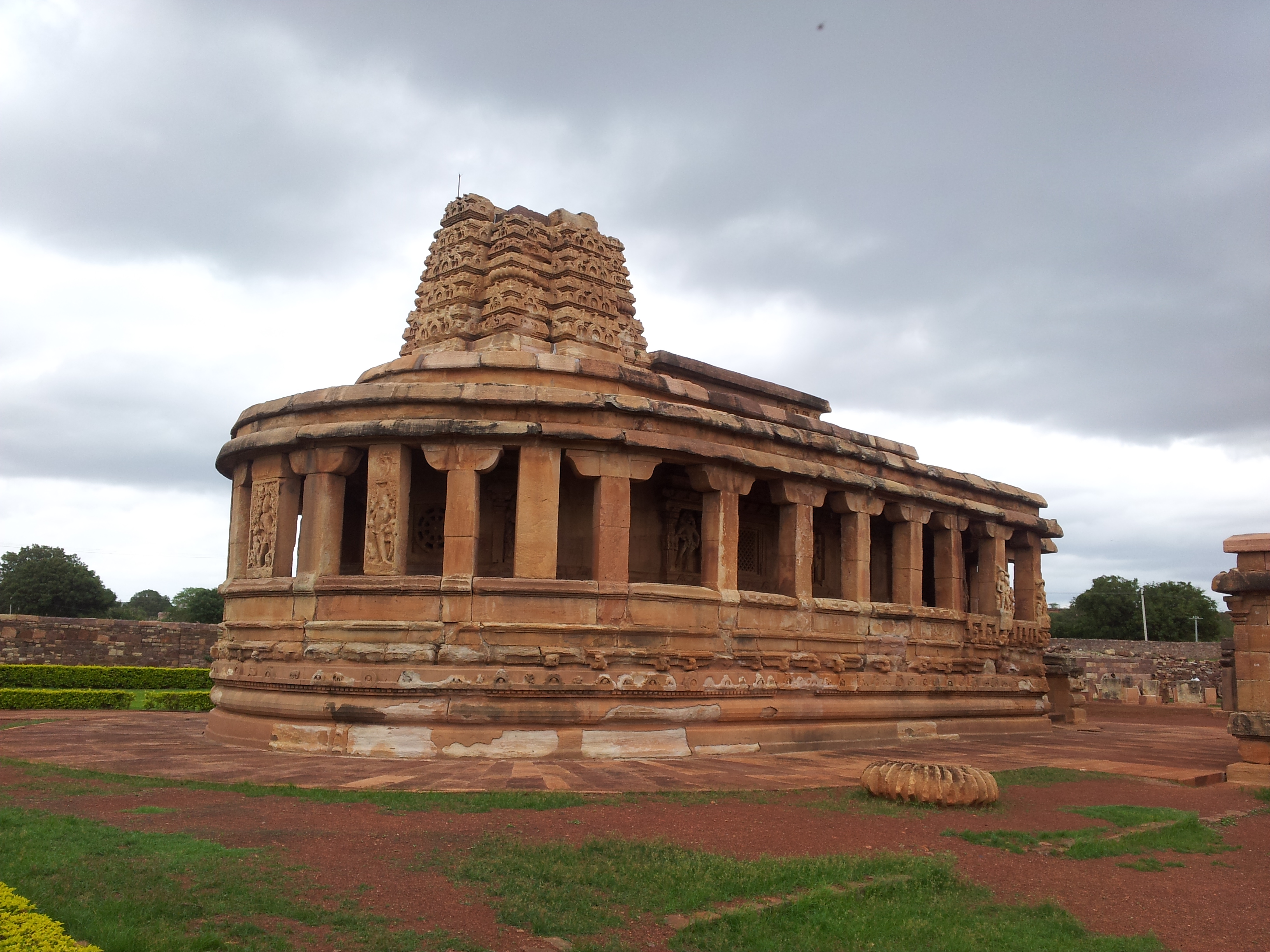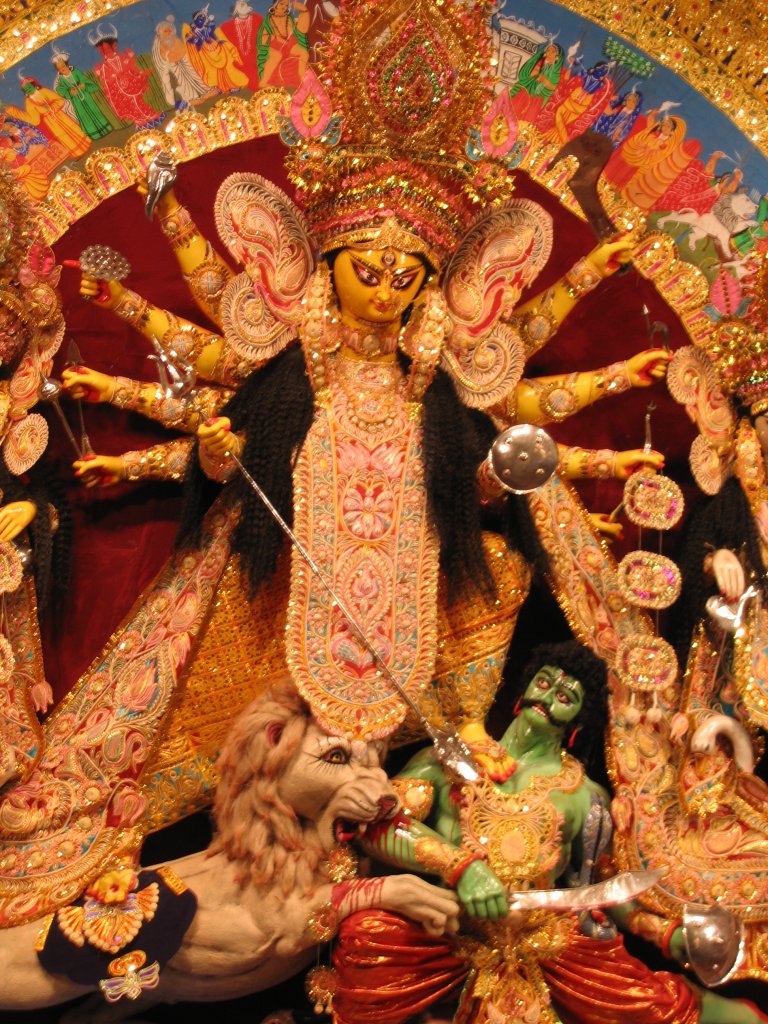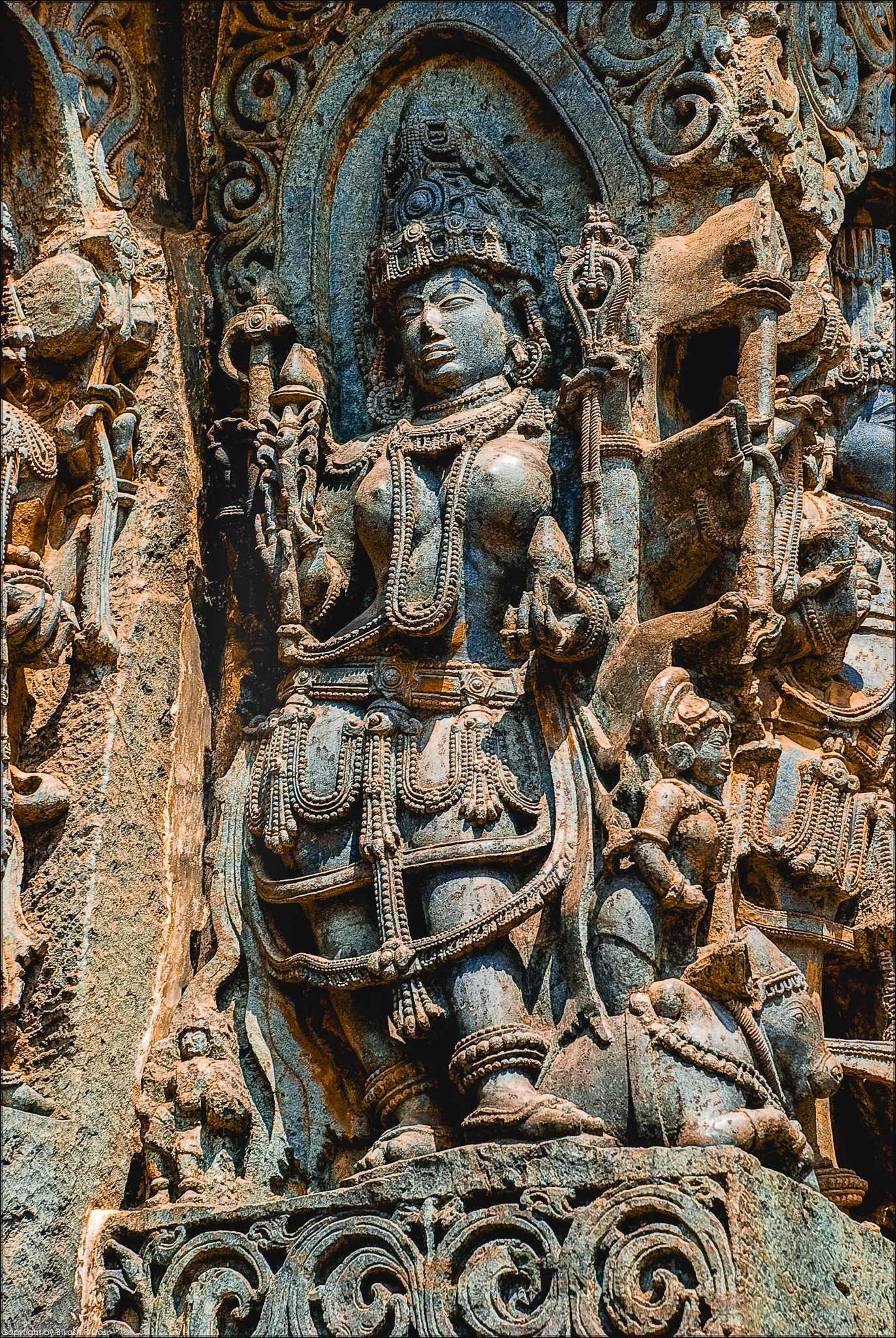|
Chandi
Chandi (, ) or Chandika () is a Hindu deity. Chandika is a form of goddess Durga. She shares similarities with the Goddess Chamunda, not only in name but also in attributes and iconography. Due to these similarities, some consider them to be the same deity, while others view them as different manifestations of Mahadevi. Both are often associated with other powerful goddesses like Durga, Katyayani, Kali and Kalaratri. The Goddess is particularly revered in Gujarat. History In the '' Devī Māhātmya.'' Chandi represents the killer of Chanda. the Supreme Divine is often referred to as Caṇḍī or Caṇḍikā. This name is derived from the Sanskrit root ''caṇḍa'', meaning “fierce” or “terrible.” Chandi is celebrated as the vanquisher of the demonic generals Chanda and Munda. According to Bhaskararaya, a prominent authority on Devi worship, Chandi embodies divine wrath and passion. The epithet of Chandi or Chandika appears in the Devi Mahatmya, a text dee ... [...More Info...] [...Related Items...] OR: [Wikipedia] [Google] [Baidu] [Amazon] |
Chandigarh
Chandigarh is a city and union territory in northern India, serving as the shared capital of the states of Punjab and Haryana. Situated near the foothills of the Shivalik range of Himalayas, it borders Haryana to the east and Punjab in the remaining directions. Chandigarh constitutes the bulk of the Chandigarh Capital Region or Greater Chandigarh, which also includes the adjacent satellite cities of Panchkula in Haryana and Mohali in Punjab. It is located 260 km (162 miles) northwest of New Delhi and 229 km (143 miles) southeast of Amritsar and 104 km (64 miles) southwest of Shimla. Chandigarh is one of the earliest planned cities in post independence India and is internationally known for its architecture and urban design. The master plan of the city was prepared by Swiss-French architect Le Corbusier, which built upon earlier plans created by the Polish architect Maciej Nowicki and the American planner Albert Mayer. Narinder Singh Lamba, in the capacity ... [...More Info...] [...Related Items...] OR: [Wikipedia] [Google] [Baidu] [Amazon] |
Devi Mahatmya
The ''Devi Mahatmya'' or ''Devi Mahatmyam'' () is a Hindu philosophical text describing the Goddess, known as Mahadevi, Adi Parashakti or Durga, as the supreme divine parabrahma, ultimate reality and creator of the universe. It is part of the Markandeya Purana, Mārkandeya Purāna (chapters 81 to 93). ''Devi Mahatmyam'' is also known as the ''Durgā Saptashatī'' () or Śata Chandī (शत् चंडी) and ''Chandi Path'' (). The text contains 700 verses arranged into 13 chapters. It is one of the most important texts in Shaktism, along with ''Devi-Bhagavata Purana'' and Devi Upanishad. The text is one of the earliest extant complete manuscripts from the Hindu traditions which describes reverence and worship of the feminine aspect of God. The ''Devi Mahatmyam'' describes a storied battle between good and evil, where the Devi manifesting as goddess Durga leads the forces of good against the demon Mahishasura—the goddess is very angry and ruthless, and the forces of goo ... [...More Info...] [...Related Items...] OR: [Wikipedia] [Google] [Baidu] [Amazon] |
Matrika
Matrikas (Sanskrit: मातृका (singular), IAST: mātṛkā, lit. "mothers") also called Mataras or Matri, are a group of mother goddesses in Hinduism. The Matrikas are often depicted in a group of seven, the Saptamatrika(s) (Seven Mothers). However, they are also depicted as a group of eight, the Ashtamatrika(s). In the '' Brihat Samhita'', Varahamihira says that "Matrikas are forms of Parvati taken by her with cognizance of (different major Hindu) gods corresponding to their names." They are associated with these gods as their energies (''Shaktis''). Brahmani emerged from Brahma, Vaishnavi from Vishnu, Maheshvari from Shiva, Indrani from Indra, Kaumari from Kartikeya, Varahi from Varaha and Chamunda from Chandi. And additionals are Narasimhi from Narasimha and Vinayaki from Ganesha. Originally the seven goddesses of the seven stars of the star cluster of the Pleiades, they became quite popular by the seventh century CE and a standard feature of the Hindu goddes ... [...More Info...] [...Related Items...] OR: [Wikipedia] [Google] [Baidu] [Amazon] |
Chamunda
Chamunda (, ), also known as Chamundeshwari, Chamundi or Charchika, is a fearsome form of Chandi, the Hindu mother goddess, Mahadevi and is one of the seven Matrikas.Wangu p.72 She is also one of the chief Yoginis, a group of sixty-four or eighty-one Tantric goddesses, who are attendants of the warrior goddess Parvati.Wangu p.114 The name is a combination of Chanda and Munda, two demons whom Chamunda killed. She is closely associated with Kali, another fierce aspect of Parvati. She is identified with goddesses Parvati, Kali or Durga. The goddess is often portrayed as residing in cremation grounds or near holy fig trees. The goddess is worshipped by ritual animal sacrifices along with offerings of wine. The practice of animal sacrifices has become less common with Vaishnavite influences. Origins Ramakrishna Gopal Bhandarkar says that Chamunda was originally a tribal goddess, worshipped by the tribals of the Vindhya mountains in central India. These tribes were known to ... [...More Info...] [...Related Items...] OR: [Wikipedia] [Google] [Baidu] [Amazon] |
Kalaratri
Kalaratri () is the seventh of the nine Navadurga forms of the goddess Mahadevi. She is first referenced in the Devi Mahatmya. Kalaratri is one of the fearsome forms of the goddess. It is not uncommon to find the names ''Kali'' and ''Kalaratri'' being used interchangeably, although these two deities are argued to be separate entities by some. Kali is first mentioned in Hinduism as a distinct goddess around 300 BCE in the Mahabharata, which is thought to have been written between the 5th and 2nd centuries BCE (with possible oral transmission from a much earlier period). Kalaratri is traditionally worshipped during the nine nights of Navaratri celebrations.The Seventh form of Durga The seventh day of Navaratri in particular is dedicated to her, and she is considered the fiercest form of the goddess, her appearance itself invoking fear. ... [...More Info...] [...Related Items...] OR: [Wikipedia] [Google] [Baidu] [Amazon] |
Shakta
Shaktism () is a major Hindu denomination in which the deity or metaphysical reality is considered metaphorically to be a woman. Shaktism involves a galaxy of goddesses, all regarded as different aspects, manifestations, or personifications of the divine feminine energy called ''Shakti''. It includes various modes of worship, ranging from those focused on the most worshipped Durga, to gracious Parvati, and the fierce Kali. After the decline of Buddhism in India, various Hindu and Buddhist goddesses were combined to form the Mahavidya, a pantheon of ten goddesses. The most common forms of the Mahadevi worshipped in Shaktism include: Durga, Kali, Saraswati, Lakshmi, Parvati, and Tripura Sundari. Also worshipped are the various Gramadevatas across the Indian villages. Shaktism also encompasses various tantric sub-traditions, including Vidyapitha and Kulamārga. Shaktism emphasizes that intense love of the deity is more important than simple obedience, thus showing an inf ... [...More Info...] [...Related Items...] OR: [Wikipedia] [Google] [Baidu] [Amazon] |
Durga
Durga (, ) is a major Hindu goddess, worshipped as a principal aspect of the mother goddess Mahadevi. She is associated with protection, strength, motherhood, destruction, and wars. Durga's legend centres around combating evils and demonic forces that threaten peace, prosperity, and dharma, representing the power of good over evil. Durga is believed to unleash her divine wrath against the wicked for the liberation of the oppressed, and entails destruction to empower creation. Durga is seen as a motherly figure and often depicted as a beautiful woman, riding a lion or tiger, with many arms each carrying a weapon and often defeating demons. She is widely worshipped by the followers of the goddess-centric sect, Shaktism, and has importance in other denominations like Shaivism and Vaishnavism. The most important texts of Shaktism, Devi Mahatmya and Devi Bhagavata Purana, revere Devi (the Goddess) as the primordial creator of the universe and the Brahman (ultimate truth and reali ... [...More Info...] [...Related Items...] OR: [Wikipedia] [Google] [Baidu] [Amazon] |
Shakti
Shakti (Devanagari: शक्ति, IAST: Śakti; 'energy, ability, strength, effort, power, might, capability') in Hinduism, is the "Universal Power" that underlies and sustains all existence. Conceived as feminine in essence, Shakti refers to the personified energy or power of a Deva (Hinduism), male deity, often personified as the female consort of the given Hindu god. In Tantric Shaktism, Shakti is the foremost deity, akin to Brahman. In Puranic Hinduism, Shiva and Shakti are the masculine and feminine principles that are complementary to each other. The male deity is ''purusha'', pure consciousness, which creates the universe through the female creative energy of Shakti, which is ''Prakṛti, prakriti'', 'nature'. The term ''Shakta'' is used for the description of people associated with Shakti worship. The Shakta pithas are shrines, which are believed to be the sacred seats of Shakti. Etymology and overview According to the Monier Monier-Williams, Monier-Williams dict ... [...More Info...] [...Related Items...] OR: [Wikipedia] [Google] [Baidu] [Amazon] |
Ambika (goddess)
Ambika (, ) is generally an epithet or form of Mahadevi, the supreme goddess of Hinduism. In Shaktism, she is revered as Adi Parashakti, the mother of the universe and all beings. She is often identified with various incarnations such as Chandi, Durga, Bhagavati, Lalitambika, Bhavani and many others. In her iconography, she is typically depicted with eight arms holding multiple weapons. Legend According to the ''Devi Mahatmya'', after the asura Mahishasura was slain by Durga, the divinities embarked on a pilgrimage to the Himalayas and sang a hymn of praise in honor of the supreme goddess. Meanwhile, Goddess Parvati had come to the source of the Ganges to bathe and observed the hymn. She asked the divinites to whom the hymn was dedicated. Before they could respond, she shed her outer corporeal form, revealing her true and auspicious form, who is then named Ambika. Manifestations and aspects In the ''Devi Bhagavata Purana'', Ambika is described to be the lineal progenitor of ... [...More Info...] [...Related Items...] OR: [Wikipedia] [Google] [Baidu] [Amazon] |
Raktabīja
Raktabīja (, ) is an asura in Hinduism. According to the Puranas, he fought with Shumbha and Nishumbha against the goddesses Kali and Chandi, both forms of Durga. Raktabīja secured from Shiva a boon according to which if one drop of blood from his body fell on the battlefield, many Raktabījas would arise from the blood and fight the enemies. Each of these Raktabījas would also be like the others in the matter of strength, form, and weapons. Legend Origin According to the Puranas, there was an asura king called Danu. His two sons, Rambha and Karambha, who had no children, did Tapas at Pañcanada for the blessing of having children. Rambha and Karambha meditated upon Mālavaṭa Yakṣa, the former seated at the centre of the five fires and the latter standing in the water of a lake. When Indra found out about this, he decided to kill them. In the guise of a crocodile, Indra dragged Karambha away by the feet and killed him by drowning him. Then Indra went after Ram ... [...More Info...] [...Related Items...] OR: [Wikipedia] [Google] [Baidu] [Amazon] |
Bengal
Bengal ( ) is a Historical geography, historical geographical, ethnolinguistic and cultural term referring to a region in the Eastern South Asia, eastern part of the Indian subcontinent at the apex of the Bay of Bengal. The region of Bengal proper is divided between the modern-day sovereign nation of Bangladesh and the States and union territories of India, Indian states of West Bengal, and Karimganj district of Assam. The ancient Vanga Kingdom is widely regarded as the namesake of the Bengal region. The Bengali calendar dates back to the reign of Shashanka in the 7th century CE. The Pala Empire was founded in Bengal during the 8th century. The Sena dynasty and Deva dynasty ruled between the 11th and 13th centuries. By the 14th century, Bengal was absorbed by Muslim conquests in the Indian subcontinent. An independent Bengal Sultanate was formed and became the eastern frontier of the Islamic world. During this period, Bengal's rule and influence spread to Assam, Arakan, Tri ... [...More Info...] [...Related Items...] OR: [Wikipedia] [Google] [Baidu] [Amazon] |








